Everything you Need to Know about Swimming
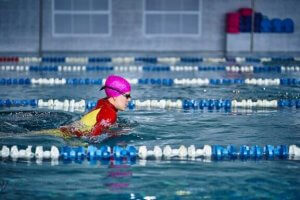
Swimming is one of the best physical activities for people who want to get in shape. In this article, we’ll tell you all about swimming, including the benefits and the different strokes. One of the most important things to know is that you can exercise all the muscles in your body by practicing this sport.
You might like: Swimming Styles and Their Benefits
All about swimming
When you’re not used to it, swimming continuously for several minutes can actually be quite a complicated task. As with other types of exercise, it’s ideal to take regular breaks until you’re in good enough shape to increase the length of your workout sessions.
In the same way, it’s important that you stay hydrated before, during, and after each training session.
On the other hand, swimming is a low impact sport, meaning it won’t overwork your joints and muscles. However, it’s always essential to warm up and stretch your muscles in order to reduce the risk of injuring yourself.
You’ll see that with consistency and frequent practice, you’ll be able to gradually increase the distances that you can swim.
The benefits of swimming
Swimming is one of the most highly recommended sports. In fact, this is a physical activity with many benefits, even for people who only practice it occasionally. Let’s go over the most important benefits of swimming.
1. Low impact exercise, great for your joints
One of the primary benefits of swimming is that it’s low impact and therefore good for your back and joints. This is the main reason why this sport is practiced by many different kinds of athletes of all ages and abilities.
For this reason, many swimming injuries are actually the result of repetitive movements as opposed to trauma. As a result, this is definitely an advantage for people who tend to injure themselves quite easily.
2. Tones your muscles
Practicing swimming regularly helps tone the muscles of your arms, legs, and torso. The weightlessness effect that you feel when you submerge yourself in the water allows you to work all the muscles of your body without a problem.
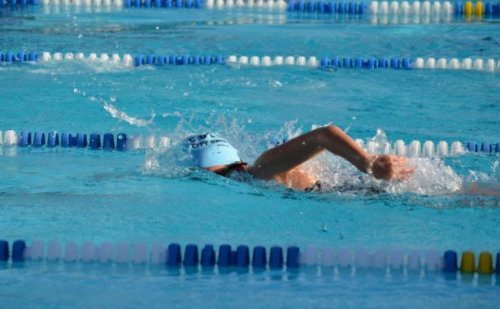
The main advantage of swimming is that it allows you to work all the muscles in your body. This will guarantee that your body and musculature are proportionate. Additionally, you don’t need to include additional weights because the water offers plenty of resistance.
3. Burns calories
Swimming improves cardiovascular system function. Therefore, this sport is a phenomenal ally for losing weight and burning calories.
It’s not necessary to swim for hours on end in order to see results. In reality, it’s essential to establish goals and respect them. That way, gradually, you’ll be able to increase the intensity of your workouts.
You might like: Tips for Improving Your Swimming Technique
The principal swimming styles
There are different styles of swimming that allow the athlete to work their entire body. In order to train and develop your muscles in a balanced way and avoid a boring routine, the best thing to do is switch up your swimming strokes. Below, we’ll explain what those are.
1. Front crawl
The front crawl is the fastest and most efficient swimming style of them all. This is because the legs do very fast, compact, and alternating up and down movements while the arms are moving constantly.
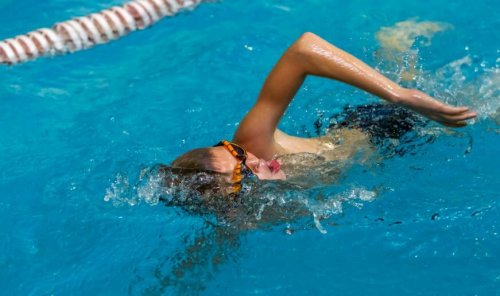
While one arm pulls the water backward after being stretched out ahead of you, the other arm recovers above the surface starting from the hip until it’s stretched out ahead of you. Therefore, in order to breath, the swimmer turns his or her head to one side during the arm recovery.
2. Breaststroke
The breaststroke is one of the first swimming styles taught to beginners. It allows you to swim while you keep your head out of the water at all times. This means that people can learn how to swim without having to use swimming goggles or deal with breathing issues or techniques.
Your arms need to move simultaneously below the water in a semicircular movement in front of your body. Your legs will move outwards to each side before stretching out and returning to the start position.
3. Back crawl
This swimming style improves posture and allows you to work your shoulder and back muscles. To execute this movement, you need to float on your back in the water and then alternate your arms to propel you backward.
Your arms need to begin the circular movement by pushing the water forward and then recover above your body. Meanwhile, your legs need to be kicking constantly.
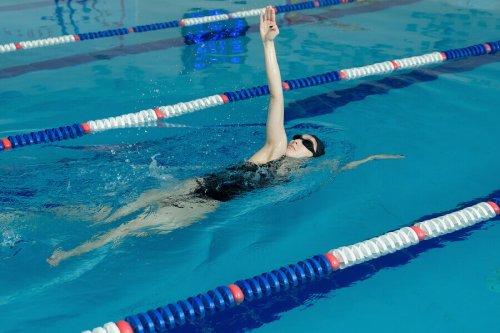
4. Butterfly: the hardest swimming style
The butterfly stroke is an advanced swimming style that provides you with a great workout. It can be very difficult and exhausting to learn, as it requires coordination and precision, despite the fact that it’s a very fun style.
To execute the butterfly, you must start by floating on your stomach in the pool. Bring both your arms simultaneously above your head and then push them back through the water to propel yourself forward. Now, take your arms out of the water and repeat this movement again.
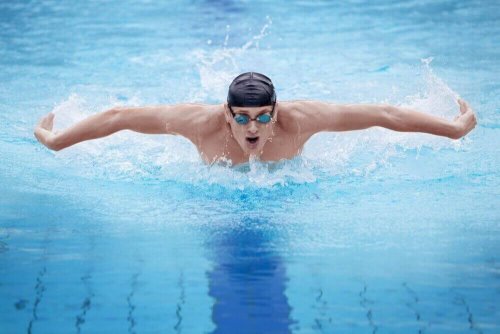
As you move your arms in of the water, push your head and shoulders over the surface of the water. Your legs also need to kick in order to complete this movement that will propel you out of the water.
Lastly, it’s worth reminding you that there are many swimming styles but all of them work all the muscles in your body. Don’t forget that there’s no perfect age to start. You also don’t need to swim a certain amount of time in order to reap the benefits of this sport. Get motivated to try this fun and exciting sport!
Swimming is one of the best physical activities for people who want to get in shape. In this article, we’ll tell you all about swimming, including the benefits and the different strokes. One of the most important things to know is that you can exercise all the muscles in your body by practicing this sport.
You might like: Swimming Styles and Their Benefits
All about swimming
When you’re not used to it, swimming continuously for several minutes can actually be quite a complicated task. As with other types of exercise, it’s ideal to take regular breaks until you’re in good enough shape to increase the length of your workout sessions.
In the same way, it’s important that you stay hydrated before, during, and after each training session.
On the other hand, swimming is a low impact sport, meaning it won’t overwork your joints and muscles. However, it’s always essential to warm up and stretch your muscles in order to reduce the risk of injuring yourself.
You’ll see that with consistency and frequent practice, you’ll be able to gradually increase the distances that you can swim.
The benefits of swimming
Swimming is one of the most highly recommended sports. In fact, this is a physical activity with many benefits, even for people who only practice it occasionally. Let’s go over the most important benefits of swimming.
1. Low impact exercise, great for your joints
One of the primary benefits of swimming is that it’s low impact and therefore good for your back and joints. This is the main reason why this sport is practiced by many different kinds of athletes of all ages and abilities.
For this reason, many swimming injuries are actually the result of repetitive movements as opposed to trauma. As a result, this is definitely an advantage for people who tend to injure themselves quite easily.
2. Tones your muscles
Practicing swimming regularly helps tone the muscles of your arms, legs, and torso. The weightlessness effect that you feel when you submerge yourself in the water allows you to work all the muscles of your body without a problem.

The main advantage of swimming is that it allows you to work all the muscles in your body. This will guarantee that your body and musculature are proportionate. Additionally, you don’t need to include additional weights because the water offers plenty of resistance.
3. Burns calories
Swimming improves cardiovascular system function. Therefore, this sport is a phenomenal ally for losing weight and burning calories.
It’s not necessary to swim for hours on end in order to see results. In reality, it’s essential to establish goals and respect them. That way, gradually, you’ll be able to increase the intensity of your workouts.
You might like: Tips for Improving Your Swimming Technique
The principal swimming styles
There are different styles of swimming that allow the athlete to work their entire body. In order to train and develop your muscles in a balanced way and avoid a boring routine, the best thing to do is switch up your swimming strokes. Below, we’ll explain what those are.
1. Front crawl
The front crawl is the fastest and most efficient swimming style of them all. This is because the legs do very fast, compact, and alternating up and down movements while the arms are moving constantly.

While one arm pulls the water backward after being stretched out ahead of you, the other arm recovers above the surface starting from the hip until it’s stretched out ahead of you. Therefore, in order to breath, the swimmer turns his or her head to one side during the arm recovery.
2. Breaststroke
The breaststroke is one of the first swimming styles taught to beginners. It allows you to swim while you keep your head out of the water at all times. This means that people can learn how to swim without having to use swimming goggles or deal with breathing issues or techniques.
Your arms need to move simultaneously below the water in a semicircular movement in front of your body. Your legs will move outwards to each side before stretching out and returning to the start position.
3. Back crawl
This swimming style improves posture and allows you to work your shoulder and back muscles. To execute this movement, you need to float on your back in the water and then alternate your arms to propel you backward.
Your arms need to begin the circular movement by pushing the water forward and then recover above your body. Meanwhile, your legs need to be kicking constantly.

4. Butterfly: the hardest swimming style
The butterfly stroke is an advanced swimming style that provides you with a great workout. It can be very difficult and exhausting to learn, as it requires coordination and precision, despite the fact that it’s a very fun style.
To execute the butterfly, you must start by floating on your stomach in the pool. Bring both your arms simultaneously above your head and then push them back through the water to propel yourself forward. Now, take your arms out of the water and repeat this movement again.

As you move your arms in of the water, push your head and shoulders over the surface of the water. Your legs also need to kick in order to complete this movement that will propel you out of the water.
Lastly, it’s worth reminding you that there are many swimming styles but all of them work all the muscles in your body. Don’t forget that there’s no perfect age to start. You also don’t need to swim a certain amount of time in order to reap the benefits of this sport. Get motivated to try this fun and exciting sport!
All cited sources were thoroughly reviewed by our team to ensure their quality, reliability, currency, and validity. The bibliography of this article was considered reliable and of academic or scientific accuracy.
- Llana Belloch, S. (2002). El Análisis Biomecánico En Natación. Facultad de La Actividad Física y El Deporte. Universitat de Valencia, 31. Retrieved from http://kimerius.com/app/download/5780666631/El+análisis+biomecánico+en+natación.pdf
- Soler, J. M. (1952). Natación. Natación. Publicado Mensualmente Por El Club Natación de Barcelona, 305, 228–230. https://doi.org/10.1016/S0304-405X(99)00053-7
- Arribas, I. S. (2002). Natación y flexibilidad. Revista Internacional de Medicina y Ciencias de La Actividad F’isica y Del Deporte, 2(6), 128–142. Retrieved from http://dialnet.unirioja.es/servlet/articulo?codigo=1257514 http://www.redalyc.org/articulo.oa?id=227017599004
This text is provided for informational purposes only and does not replace consultation with a professional. If in doubt, consult your specialist.








